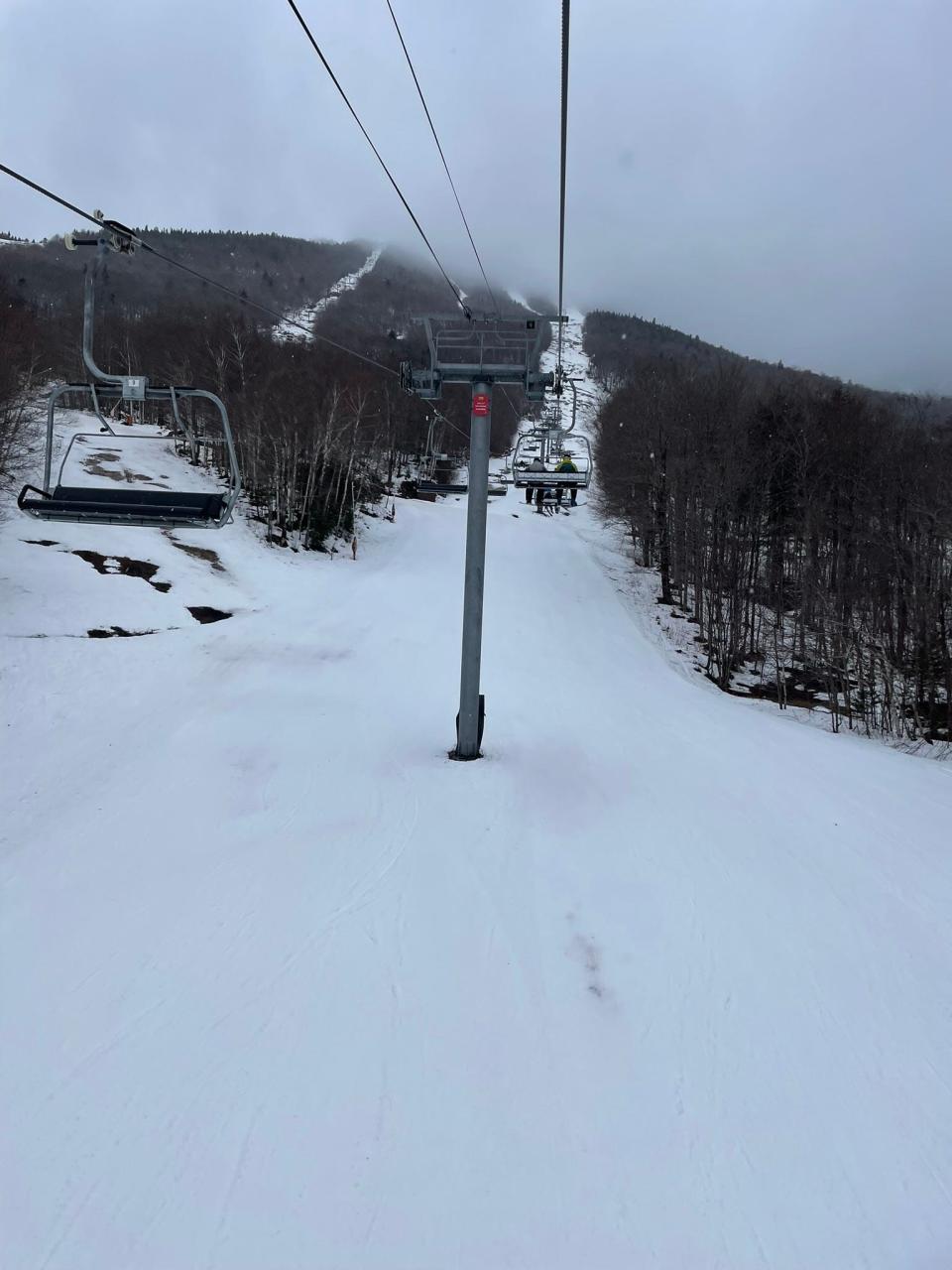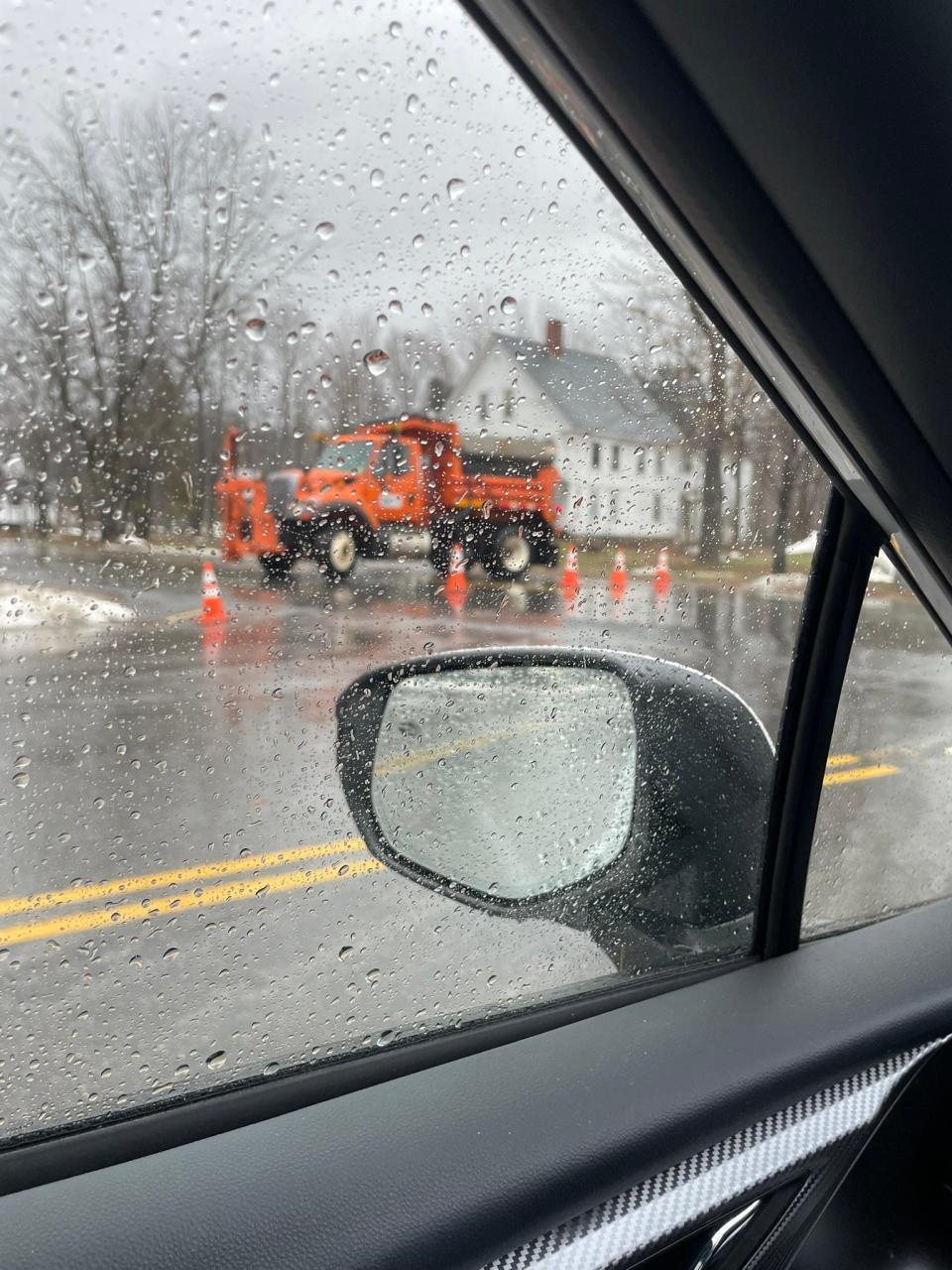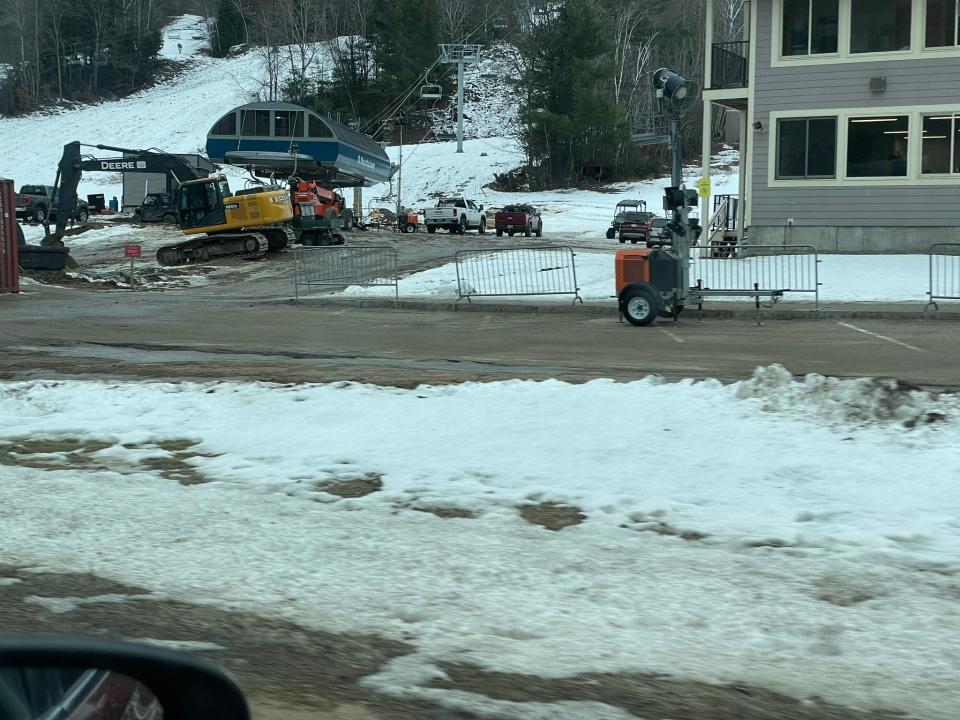'You have to just deal with it': Weekend's wet weather was more than frightful for New England ski areas

You have to be a stoic to ski in New England.
But the will of even the most hardened skiers and snowboarders accustomed to nasty freeze-thaw cycles every season was pushed to the limit by the malevolent weather of early this week, the biggest and most damaging pre-Christmas rainstorm New England ski areas have seen in decades.
It was utter misery for the ski and snowboard community, not to mention all the residents and businesses across the region battered or displaced by floodwaters.
The storm, which started late Sunday morning and finally exhausted itself Monday night, came at the absolute worst time, just before the busy Christmas week that traditionally kicks off the ski and ride season and sets the tone for the winter.
Road trip
As for me, I unluckily had picked the pre-Christmas week to take a week off from the day job and head north to the ski zones of North Conway, New Hampshire, and Stowe, Vermont.
It's a trip that has tested my longstanding conviction that your worst day skiing is better than your best day at the office or on the job.
As the weather apps steadily foretold of the devastating rains that were to be visited upon New England Sunday and Monday, I headed to Wildcat and Attitash, the Mount Washington Valley legends, with my longtime skiing buddy, Michael O'Sullivan of Worcester, a former Telegram & Gazette copy editor and retired school administrator whom I've quoted as an observer in this column over the years.
O'Sullivan is one of those ski stoics who can stay optimistic even during the lowest ebbs of ski season.
As we road Wildcat's high-speed quad to the summit of this magnificent mountain, with its unrivaled view of Mount Washington and Tuckerman Ravine, he told me he's seen even worse conditions in mid-December than the brown and dirty white landscape below us. Most of the mountain was closed, even before the storm, yet Wildcat had pieced together a top-to-bottom route starting with Upper Polecat. Conditions were a hard-groomed surface up top, with ice and broken-up crunchy snow making the lower part of the route challenging.
"I've seen Decembers when Attitash and Wildcat weren't open at all," O'Sullivan said. "There will be some snow up there when this is done.
"And they'll be able to build on that. I have faith in them. They're trying very hard," he added, referring to the ski area's massive snowmaking and grooming effort that would follow the storm.
We ran into J.D. Crichton, the general manager of Wildcat, last Saturday morning as helped out in the base lodge busing tables and chatting with customers.
You could sense his resignation as Crichton talked about how the ski area decided on what terrain to open last weekend and how it was less than optimal, especially since Wildcat had seen some considerable natural snow over the previous weeks.
"You have to just deal with it," he said.
Though with nothing like Attitash's new high-speed summit lift to boast of this season, Wildcat saw some improvements over the offseason.
A new pedestrian footbridge from the lodge to the lifts looks crisp and handsome, and a new staircase leading from ground level to the lodge is another new addition. Crichton also noted that his team worked on the ventilation in the old lodge to vent out a distinct bathroom odor that has permeated parts of the building over the years.
On the mountain on this clear and sunny day, crisp views of Washington and Tuckerman were omnipresent and inspiring. Washington, just across Pinkham Notch from Wildcat, is one of the least sunny places in the country, seeing sun only about a third of the year.
Over at Attitash
Conditions were much the same at Wildcat's sister ski area, Attitash, about 20 minutes away. Both ski areas are owned by Colorado-based Vail Resorts.
While Vail completes the last work on the new Mountaineer summit lift, only one of the area's two mountains was open: Bear Peak. The speedy Flying Bear high-speed quad transported O'Sullivan and me to the summit, from which we made a handful of descents on a top-to-bottom route patched together with pieces of a handful of trails. Over on the Attitash side, the Progression Quad, new as of last season, was open too.
After skiing, we stopped to get a closer look at the Mountaineer, which to me is one of the biggest advancements in New England skiing in a long, long time — finally enabling quick access to Attitash's unique network of steep, snaking upper mountain trails.
The chairs were up, strung across the haul rope to the top, and an opening appeared imminent.

Fighting the rains
I tried to leave North Conway for Stowe late morning on Sunday but ran into a rapidly flooding West Side road and police blocking the roadway. I turned around and attempted to take Route 302 through Crawford Notch, but the road had just been closed a little past Attitash.
My only hope for a somewhat direct path to Stowe was the mountainous Kancamagus Highway, which cuts 34.5 miles through the beautiful White Mountain National Forest from Conway to Lincoln, home of Loon Mountain.
The road is considerably steep in many places, which was a positive in these conditions, with little standing water and rivers on both sides surging but situated fairly below the roadway.
Then it was on to I-93, I-91 and then a bleak and sodden landscape on some secondary roads in near flooded country into Stowe.

Stowe
It was still pouring when I arrived at the ski capital of the East, yet I knew somehow that majestic Mount Mansfield would survive the wet onslaught in somewhat tolerable condition.
Stowe, along with other ski areas in this northern Vermont vicinity — including Smuggler's Notch, Bolton Valley and Jay Peak — had received nearly 60 inches of snow in early December — on top of a solid machine-made base due to low early-season temperatures — and had been enjoying one of the best early seasons in years. Some people were even saying the northern New England snow cluster had the best skiing in the country at the time.
Scott Reeves, Stowe's senior director of mountain operations who has been at Stowe for about 18 years, said it was the first time he'd sees all of the mountain's fabled "Front Five" expert steep runs — Goat, Liftline, National, Nosedive and Starr — open at the same time before Christmas, said Stowe spokesman Joe Healy.
Then came the monsoon.
The rain wiped out dozens of open trails, including all of the famed expert terrain on Mansfield.
After a huge setback like this, the mountain operation people assess what needs to be resurfaced and when, Healy said.
"They use resources you where they're needed. All their trails will get a freshening again, knowing the weekend ahead is a holiday, one of our peaks of the season," said Healy, whose wife, Robin, grew up in Holden. "We're working double time right now to get that down."
Amazingly enough, the gondola was running to the top Tuesday morning, as were the new Sunrise Six high-speed chair and the Forerunner high-speed quad to the Mansfield summit.
The gondola pod's iconic high-intermediate cruiser, Perry Merrill, was open top to bottom with soft and firm snow, but quite ski-able despite a dense fog.
Stowe, by the way, never closed completely on Monday, the day of the most torrential rains. But its fellow Vail mountains Mount Snow, Attitash, Wildcat and Mount Sunapee — along with a dozen other ski areas at least — were closed Monday or Monday and Tuesday.
From the gondola area I headed to the chairs and skied Sunrise, Lord, T-Line and Standard — some of the interestingly pitched trails that form a complex of intermediate runs that has really been opened up with the new Sunrise lift from about three-quarters up the mountain. They were all in decent shape. Mountain operations had let them dry up a bit with a later than usual 9 a.m. start, and the trails had been groomed about as well as possible.
At the top, the snowguns already were pounding out new product.
Soon it started snowing. The new snow softened up the terrain, and it almost seemed like the ski season could be saved.
"It's nature's consolation prize," said a skier with whom I shared a ride on the Sunrise Six.
—Contact Shaun Sutner by e-mail at s_sutner@yahoo.com.
This article originally appeared on Telegram & Gazette: Snow sports: Weekend's wet weather was more than frightful for ski areas

